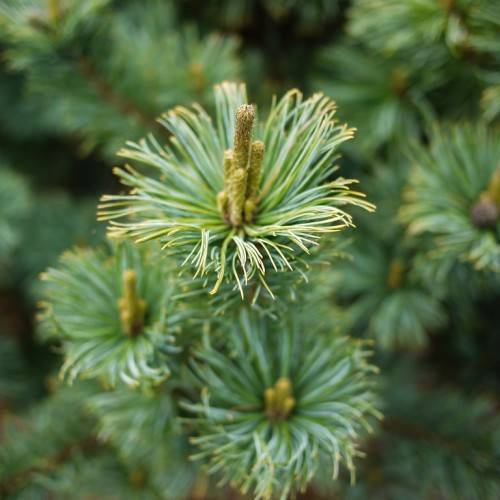
dwarf Siberian pine
Pinus pumila
Cycle:
Perennial
Watering:
Average
Hardiness Zone:
4 - 7
Flowers:
Flowers
Sun:
Full sun
Cones:
Yes
Edible:
Yes
Leaf:
Yes
Growth Rate:
Low
Maintenance:
Low
Drought Tolerant:
Yes
Salt Tolerant:
Yes
Invasive:
Yes
Care Level:
Medium
watering
Water dwarf Siberian pine plants deeply every 10-14 days when grown in containers. When grown in the ground, water once every 2-3 weeks during the spring and summer, when the plant is actively growing. During the fall and winter months, water the plant every month or when the soil is very dry. Avoid overwatering. To determine if the soil is dry, stick your finger 1-2 inches into the soil before watering. If the soil is still damp, no additional watering is necessary.
sunlight
Dwarf Siberian pine (Pinus pumila) is a cold-tolerant conifer, native to the northern region of Eastern Siberia. This species is noted for its ability to thrive in dry soils and full sun. It is an evergreen coniferous tree that prefers at least 4 to 6 hours of full sun exposure daily. During summer months, the plant can benefit from an extra dose of morning sun. This species does well in partial shade, so some afternoon or morning shade is beneficial. During the winter, the Siberian pine should get at least an hour of direct sun per day, as it needs light to stay healthy.
pruning
Dwarf Siberian Pine should be pruned in late spring to remove any dead, diseased or weak branches and/or any branches that are crossing or rubbing other branches - this will help to improve air circulation, form a more aesthetically pleasing shape and help the plant to grow healthily. Depending on the desired shape, light thinning of strong growth can also be done in late spring, but if more extensive pruning is needed, it is best to wait until winter, when the plant is semi-dormant. Thinning of dense areas or large-scale shaping of growth should be done during the winter season to reduce the amount of sap lost, as the plant will be regenerating less vigorously at this time.
